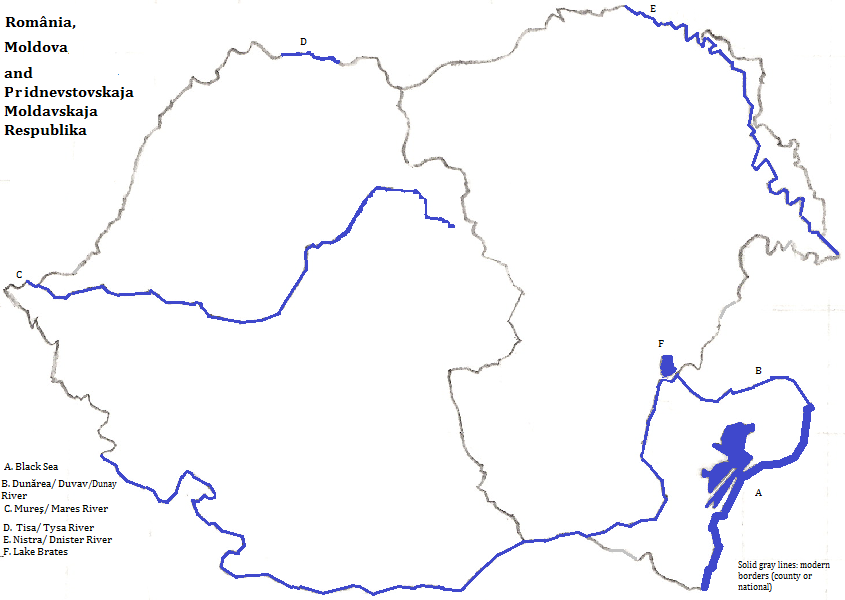
| To Duval Family Home Page | Europe | |
| To Chris Home Page | Romania, Moldova and Pridnestrovskaja Moldavskaja Respublika | |
| To Earth (Geography Home Page) |
A sickle-shaped mountain range, the Carpații,

More than eight in ten speak Romanian. Magyar
There is one city of over a million, and several other cities of note: Romanian and Moldovan Cities.
Tourists visit the Dunărea Delta (a UNESCO World Heritage Site); Bran Castle at Bran, 30 kilometers outside of Brașov; Peleș Castle at Sinaia, 44 km beyond Brașov; the Transfăgărașan Road between Pitești and Sibiu; the Merry Cemetery at Săpănța; and the cities of Sighișoara (whose historic center is a World Heritage Site), Timișoara, Sibiu, Brașov and Chișinâu.
Other World Heritage Sites are: the Rudi marker, part of the Struve Geodetic Arc, near the village of Rudi, Moldova; the Churches of Moldavia, Suceava County, România;
Constanța is an important oil port.10
By four thousand years ago speakers of Indo-European languages had arrived here from what is now the Ukraine. Towards the end of the first millenium B.C.E. people here spoke Thracian, the language of Dacia. The Roman conquerors introduced large numbers of Latin-speakers, and Romanian is a descendent of Latin. This continuity persisted despite numerous invasions from the northeast: Germans like the Visigoths; Turkic people like the Huns; the Avars
The Dacian kingdom's religion is not known to me but it presumably shared gods and goddesses--with local names, and some social values, with all other Indo-Europeans.
Roman rule and colonization introduced both the original imperial religion--Jupiter, Juno, Mars, Apollo and all--but also the cosmopolitan introductions from African and Asian religions. The last of these was Christianity, the state religion of the later Roman Empire, persisting in its Orthodox form as the state religion of the Byzantine Empire.
north and northeast
east
south
southwest
northwest
1. Moldavia in English.
2. Called Transnistria in English. It is de facto independent.
3. Carpathians in English.
4. Danube in English.
5. Hungarian in English.
6. These are at Arbore, Humor, Moldovița, Pătrăuți, Probota, Suceava, Voronet and Surevița.
7. These are at Grădiștea de Munte, Contești, Luncani, Bănița and Căpălna.
8. These are at Biertan, Câlnic, Dârjiu, Prejmer, Saschiz, Valnea Viilor and Viscri.
9. These are at Bârsana, Budești, leud-Deal, Plopiș, Poienilelzei, Rogoz and Şurdești.
10. Alastair Cooper, ed., The Times Atlas of the Oceans (Van Nostrand Reinhold Company, 1983), "commodity loading ports" map.
11. A Northeast Caucasian language.
12. Hungarian (Magyar) is an Ugrian language.